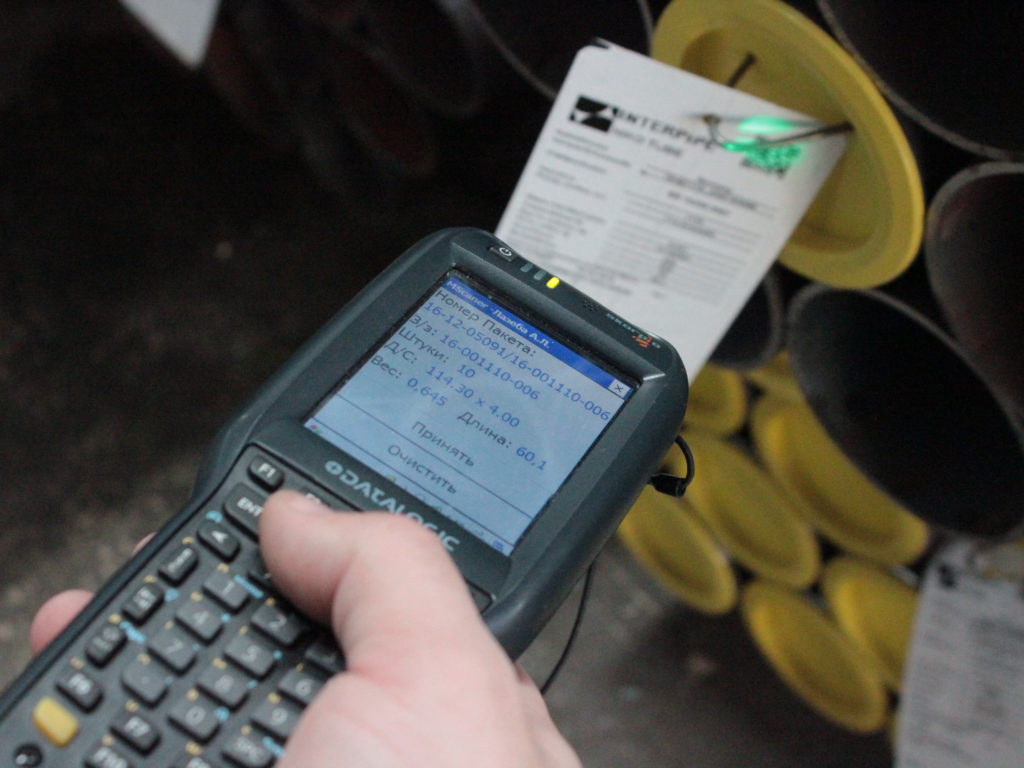
Практика впровадження ЕАМ – інтерв’ю з керівником напрямку Smart.EAM
Кирило Костанецький, керівник напрямку Smart.EAM компанії IT-Enterprise, дав інтерв’ю АППА про останні впровадження на підприємстві компанії ІНТЕРПАЙП. Інтерв’ю показує ключові тренди індустріального розвитку, а також говорить про необхідність зміни культури підприємств і нових вимог до рівня компетенцій співробітників. Також сказано про важливість автоматизованого збору даних і стикування рівнів EAM-MES з АСУТП.
– Кирило, чому почався проект ЕАМ в ІНТЕРПАЙП?
Головним ініціатором проекту був директор з фінансів та економіки. Перед ним стояло завдання добитися прозорості в розумінні структури оборотних коштів та оптимізації їх розмірів. Узагальнюючи, скажу, що це типова проблема процесу закупівлі будь-якої компанії – а саме, як оптимізувати заявки на матеріальні ресурси щодо забезпечення безперебійної роботи виробництва. Таких, як підтримання критичних компонентів на складі (наприклад, підшипники), так і витратних матеріалів (як масло). Служби закупівель та фінансів завжди намагаються оптимізувати закупівлі з точки зору фінансів. Про те, який тут потенціал розвитку, нам говорять деякі курйозні випадки. Пам’ятаю одне держ. підприємство, де відділ закупівель пішов на експеримент – вони взяли і викреслили все з плану закупівель, і місяць нічого не закупляли. Як не дивно, завод працював, як ні в чому не бувало. Цей приклад показує, що означає «термінова необхідність» товарів, яка може виходити від виробників.
Повертаючись до проекту в ІНТЕРПАЙП, скажу, що подібні проблеми виникали і тут, і менеджмент компанії задався питанням, як налагодити управління цим процесом. «Ось ми приїжджаємо на склад, дивимося – там лежать підшипники. Запитуємо експлуатацію: «А навіщо ще 2 підшипника, якщо вже 3 лежить?» – «Ну …» Ясної відповіді немає. «А для якого обладнання ця запчастина або деталь?», «А який термін служби цієї машини або деталі?», «А коли останній раз змінювалася?», «А яка нормативка …» – відповіді на всі ці запитання були явно не переконливі. Ось тоді у них остаточно виникла ідея системи управління.
У вас на той момент вже були впроваджені системи?
Так. Система управління ОПФ (прим. основними виробничими фондами) працює в IT-Enterprise з 2002 року і була реалізована вже на десятках підприємств. До цього часу прогресивним став напрямок EAM і ми вже закінчували перший сучасний проект на Полтавському ГЗК-е. Нове рішення відмінно зарекомендувано на практиці. ІНТЕРПАЙП Нікотьюб був першим заводом компанії, який почав впроваджувати наш ЕАМ. Потім був ІНТЕРПАЙП НТЗ. У Нікополі почали з одного цеху, потім – тиражували на все підприємство.
І потім – ІНТЕРПАЙП СТАЛЬ?
Так. На ІНТЕРПАЙП СТАЛІ ми побачили зовсім інші можливості управління. Тут були вже розвинені АСУТП і MES. Іншими словами, вже було дуже багато інформації про те, як обладнання працює і працювало раніше. Ця інформація використовується для управління виробництвом. Для нас – це можливість набагато краще управляти процесами обслуговування обладнання. Ми змогли зв’язатися з базою Q-MET (MES від Danieli) і отримати доступ до інформації з 23 тис. датчиків. Це дозволяє оцінювати більш 1 млн подій на обладнанні за 1 день. Наприклад, в системі автоматично фіксується напрацювання мотогодин понад 100 насосів енергослужби.
– А який був стан нормативно-довідкової інформації (НДІ) до початку проекту?
Якщо говорити про ІНТЕРПАЙП СТАЛІ, то, звичайно ж, на підприємстві частина НДІ була реалізована. Ви знаєте, що це був дуже великий проект і вся команда, яка його здійснювала, добре попрацювала. Але щось було, щось ні, щось переводилося, щось ні. Для нас було очевидно, що документація необхідна для подальшого обслуговування, йшла вторинною в пріоритетах проекту. Адже головне було – запустити завод.
Тому наше завдання по НДІ якраз і стояла в тому, щоб описати безліч різних видів устаткування від постачальників. Точніше, це більше 6 тис. технічних місць і майже 1,5 тис. об’єктів ремонту. Наприклад, ківш такий-то складається з -надцаті елементів. Частина з них потрібно перевіряти 1 раз на півроку, інші – кожен місяць і т.д. Щось потрібно міняти періодично. Таким чином, описання перетворюються в правила в системі. Система далі сама буде нагадувати, підказувати, спрямовувати. Наприклад, на поточному тижні – «вам потрібно поміняти прокладку в вузлі Х агрегату Y».
– Ви самі робили ці описи або замовник?
На наше глибоке переконання, дані і регламенти завжди повинні вноситися руками замовника. Якщо цього не відбувається, система не буде працювати – замовник буде занадто залежати від виконавця і / або не навчиться працювати. Крім того замовник краще розуміє власне обладнання і знає його в рази краще виконавця.
– Крім інтеграції з даними з MES- що ви ще впроваджували?
Щоб інформація могла використовуватися в бізнес-процесах обслуговування, її треба готувати. У нас зазвичай впроваджуються 3 рівня змін:
- Збір інформації. Нам не потрібна інформація з датчика кожну секунду. Набагато важливіше зрозуміти довгострокову тенденцію (зміни) в поведінці конкретної одиниці обладнання. Ообсяги інформації, які накопичилися, зростають постійно.
- Підготовка інформації до зберігання та аналізу. Ми використовуємо розподілену архітектуру, де інформація зберігається на різних серверах. Інформація повинна зберігатися особливим чином, щоб займати менше місця, щоб її можна було швидше аналізувати – адже це десятки, а в найближчій преспективі сотні терабайт даних. Цю інформацію потрібно дуже уважно обробляти. Наприклад, при запуску – зупинки обладнання, проходять – великі коливання тих чи інших фізичних параметрів. Тренд цих параметрів (температури, струму і т.п.) може вести до помилкових висновків і хибним тривогам. Все це завдання по попередній обробці. Вони досить нетривіальні з урахуванням великої кількості обладнання по заводу в цілому і різних можливих станів. Всі такі ситуації система повинна чітко розрізняти і не допускати помилкових висновків.
- Обробка даних – побудова трендів, використання мат. статистики, видача рекомендацій і візуалізація.

– Як у вас сьогодні йдуть справи з превентивною та предиктивною діагностикою?
Почнемо з превентивною. 80% проблем можна закрити введенням так званої «жовтої зони». Якщо показник в ній і наближається до кордону «червоної зони», це означає, що пора втручатися, система повинна попереджати про майбутню поломку. Так працює превентивна діагностика.
Є 2-а частина завдань, де межа між жовтою і червоною зоною плаває – це близько 18% ситуацій. «Плаває» з різних причин. Це можуть бути різні типи залежності – лінійна або експоненціальна. Якщо це експоненціальна, проблема може бути завтра. Якщо лінійна – через тиждень. Це залежить від того, як показник змінювався в минулому. Щоб зрозуміти це, ми використовуємо мат. апарат статистки – тренди показують, коли обладнання увійде в червону зону. Ось це вже прогноз за допомогою мат. апарату і статистики.
Є ще 2%, де ми не можемо використовувати мат апарат статистики. Потрібні методи машинного навчання. Це у випадках, де ми не можемо описати ці зв’язки. Система сама навчається і вибудовує ці зв’язки. Людський розум не може це охопити. Ми поки не можемо говорити про 100% освоєнні цих компетенцій, але ми швидко рухаємося в цьому напрямку.
– Як ви описували в регламентах ці ситуації з червоною і жовтою зонами?
Параметри зон задають співробітники компанії-замовника. Це технологи, перш за все. Але також є документація від виробників. Параметри нормальної роботи і аномалії, як правило, там вказані.
– Як розвиваються системи ЕАМ в світі?
ЕАМ – це категорія ПО для управління виробничим підприємством. Всі системи ЕАМ працюють за близькими правилами. Можна сказати, на логіці здорового глузду. Основним способом планування раніше завжди були плани-графіки ППР, під які потрібно підтягнути ресурси і матеріали. Тому, всі спочатку рахували плани ППР, а системи називалися CMMS.
Що нового зараз з’являється?
В першу чергу йде акцент на діагностику – будь-які рішення про зупинку обладнання, проведенні ТО повинні бути засновані на конкретних вимірних показниках роботи. Тому йде швидкий розвиток діагностичних пристроїв (звуки, вібрації, температура, електро-показники і навіть запахи). Діагностика може бути зібрана персоналом або автоматично … Точкою старту процесу обслуговування є автоматизована система збору інформації. Раніше багато параметрів збиралися вручну. Зараз все автоматизовано. Це виключає горезвісний «людський фактор» і безліч помилок з цим пов’язаних. Ми самі недооцінювали точність планування і ті умови, при яких маса інформації автоматично потрапляє в систему. Сьогодні ми бачимо, що це радикально змінює точність планування, дозволяє відстежувати мікро-тренди, вивільнити багато людей і т.д. Це – принципова різниця. Тобто, точкою старту для цих процесів в ЕАМ сьогодні є інформація від АСУТП.
Якщо говорити ширше про зміни, то з приходом превентивної та предиктивної діагностик, змінюється пов’язаний з цим функціонал.
– Які показники або результати ви вважаєте головними в цьому проекті?
Спочатку розглянемо економічні показники. У ІНТЕРПАЙП це – зниження запасів запчастин для поточних і капітальних ремонтів і зменшення в них частки низькооборотних запчастин. Ми досягли 10% зниження, а це мільйони доларів. Але основний ефект проект принесе в майбутньому, коли будуть налаштовані всі системи і буде налагоджена статистика.
Якщо говорити про тенденції в світі, то всі йдуть в експлуатаційну статистику. Керівники підприємств почали дуже ретельно рахувати гроші – неможливо залишатися економічно ефективним і дозволяти собі при цьому класичні ППР-і в повному обсязі.
– А як у нас проводяться ППР?
У нас на більшості підприємств поки домінує людський фактор. Тобто, приходить дядя Ваня і, використовуючи свій багаторічний досвід, каже: «Це протримається ще півроку, це – 3 місяці, це – вже потрібно міняти» і т.д. Цікаво, що такий підхід – це вже не класичний ППР. Класичний – це як на автомобілі, – після 10-15 тис. км пробігу, ми змінюємо масло і фільтри. Такі класичні ППР залишилися не на багатьох підприємствах, на більшості ж інших домінує «ефект дяді Вані». Але ви ж розумієте недоліки цього підходу – адже все залежить тепер від кваліфікації, а може мати і чисто суб’єктивний характер, властивих конкретному «дяді Вані».
– З економічними показниками ясно. Але керівник середньої ланки часто ставить запитання «Як це зміниться на моїй роботі і на моїх службах. Наприклад, чи повинен я тепер скоротити мій персонал, скажімо, на 20%? »
Це дуже тонке питання. На практиці керівники рівня головного інженера хочуть утримати, а не скоротити своїх людей.
Зазвичай ми даємо таку відповідь – «Фахівці повинні залишатися. Але профіль їх роботи змінюється – вони повинні більше займатися аналітичною роботою ». Сучасні ЕАМ значно підвищує вимоги до фахівців! Раніше – це був механік, який перший біг по тому, що сталося інциденту і вмів робити якісне зварювання. Тепер – це механік, який знає сучасні матеріали, розуміє мастило, причини перепаду тиску, розбираються в КВП-е і який може аналізувати і діагностувати причинно-наслідкові зв’язки за допомогою комп’ютера. Тому люди повинні перевчатися.

– Все ж, бачте ви у своїй практиці ЕАМ зв’язок з вимогами керівництва?
Наприклад, ми чули від металургів про 2 зростаючих тренда – вимогах щодо скорочення людей, а також про масові самостійні звільнення фахівців – вони виїжджають з країни. І те, і інше стосується темпів впровадження таких систем, як ЕАМ.
Тренди, що ми бачимо по підприємствах на своєму рівні, – швидше йдуть від керівництва. Подекуди є тиск на скорочення людей. Але, на мій погляд, це може привести до того, що не буде кому обслуговувати обладнання. Адже що не кажіть – темпи старіння виробничих фондів у нас по країні в цілому вище, ніж темпи модернізації. Тому, мені здається, що вихід повинен складатися в паралельному впровадженні подібних систем. Але при цьому люди повинні бути підготовлені і навчені. Не повинно бути ситуації, коли причини зупинки верстата діагностуються на протязі 6-8 годин, – на це повинні йти хвилини. Звичайно, при цьому такі фахівці повинні гідно оплачуватися. І такі зміни на ряді підприємств уже в процессі змін.
Але на деяких підприємствах, на мій погляд, немає ясних політик комунікацій по відношенню до подібних систем. Я неодноразово чув «Ось ми впровадимо цю систему і мене звільнять. Навіщо мені це треба?”. З іншого боку, якщо об’єктивно дивитися, – інформаційна система дозволяє побачити реальне завантаження людей, їх зайнятість і ефективність. З досвіду ми бачимо абсолютно різну ситуацію в обслуговуванні на різних підприємствах однієї галузі – це відрізняється в рази. Наприклад, на одному підприємстві обладнання працює без зупинки, на іншому – зупиняється щомісяця.
– Ви згадали, що обробляється багато статистичних даних. Чи видно вже якісь закономірності, що дозволяють вже оптимізувати – покращувати роботу в ТОіР?
Прикладів поліпшень багато. Наприклад, на ІНТЕРПАЙП НТЗ і ІНТЕРПАЙП НІКО ТЬЮБ раніше був тільки регламент обслуговування і ППР, всі йшли по ньому. Зараз роблять виміри і бачать ситуацію в реальному часі і це вже – превентивна діагностика. Люди цим дійсно користуються. Раніше – неможливо було довести, що з обладнанням є або назріває проблема, якщо вона не очевидна. Були зовнішні підрядники, які приїжджали зі своїм дорогим обладнанням, щось заміряли, робили висновки і оцінку стану. Зараз все це доступно самим фахівцям підприємства, і вони можуть випереджати негативні сценарії.
Другий приклад про зміну культури, і він дуже показовий, на мій погляд. Завжди є період часу між виникненням заявки на обслуговування в системі (генерується автоматично) і реальної реакцією на цю заявку. Система дозволяє ясно бачити цей час реакції, і ця статистика доступна керівництву. Так ось, – за результатами перших таких аналізів у багатьох керівників був шок. Вони побачили, що персонал обслуговування реагує на заявки абсолютно не так, як передбачається по регламентам. Наприклад, є термінова заявка на ремонт критичного обладнання, але 3 дні нічого не відбувається.
– Тобто, – служби не реагують на сигнали і рекомендації системи?
Вони реагують, але в своєму порядку і в своєму розумінні зручності і пріоритетності. Так буває не тільки через недбалість. У людей часто є інші пріоритети, і в цілому між ними можуть бути значні відмінності. Аналіз цих відхилень, розуміння пріоритетів, як це бачить менеджмент, а як – служби заводу, – веде до оптимізації роботи і кращої ефективності обслуговування.
– Але як ці пріоритети узгоджуються на практиці?
В цілому, це вирішується організаційно-програмними методами. Що таке «організаційні методи» – це правила і процедури, це регламенти обслуговування. Програмні – це коли ми задаємо пріоритети різним видам обладнання в алгоритмах процесів. У кожного можуть бути різні причини поломок – від косметичних, і до безпеки людей. Так розподіляються пріоритети і відповідно до них потрібно діяти.
– Чи є в системі дашборда по KPI і якого рівня?
Один з головних показників у світі – це ОЕЕ (загальна ефективність встановленого обладнання). ОЕЕ часто міряють в ручному режимі. Десь не міряють взагалі. Тільки мала частина підприємств у нас використовує автоматизовані засоби. Поясню важливість цього на прикладі простоїв – одного з 3х головних компонентів ОЕЕ. Зазвичай датчики не показують, чому обладнання стоїть. Тому причину діагностує людина. Для цього у нас є окремий бізнес-процес. Наприклад, на ІНТЕРПАЙП НІКО ТЬЮБ є процес, який дозволяє ідентифікувати причини простою. Часто це не очевидно. Наприклад, ремонтний персонал говорить «ви невірно експлуатуєте обладнання». А експлуатаційний – «Та ні, це ви погано відремонтували в останній раз». Виникають конфлікти. Тому потрібні правила і процеси, які однозначно трактують ті чи інші ситуації. На ІНТЕРПАЙП НІКО ТЬЮБ в кінці місяця, головний інженер розбирає подібні спірні ситуації і користується при цьому всією інформацією з системи.
– Це чудово … А чи є автоматичне вимірювання ОЕЕ в ІНТЕРПАЙП?
Так, компанія перейшла на єдину систему вимірювання ОЕЕ, з єдиними правилами розрахунку елементів ОЕЕ, включаючи простої. В результаті, ми знаємо, що ОЕЕ покращився на 10-15%. Преміальна частина фахівців підв`язана на результати ОЕЕ.
– Ви аналізуєте надійність обладнання за методикою RCM. Що таке RCM-аналіз?
RCM – аналіз – це процес (методика), спрямований на встановлення кореневих причин чому обладнання виходить з ладу. Будь який простій більше нормативного часу генерує ряд питань. Система автоматично задає групі фахівців з надійності уточнюючі питання типу – «в чому причина простою», «чи вплинув простій на безпеку людей, на екологію, на процеси виробництва», «як можна було попередити або швидше усунути» і т.п. Питання будуються максимально просто і з однозначними відповідями типу «так» «немає» і в результаті видається рекомендація. Наприклад, – «потрібно збільшити періодичність перевірки тиску масла». Система вводить це в плани, і далі змінюються регламенти. Таким чином, відбувається постійне вдосконалення системи обслуговування.
– Як змінилися після цього впровадження, ваші власні погляди на ЕАМ і на розвиток подібних систем в Україні?
Це сучасний підхід – без цього підприємства вже не можуть обходитися. Неможливо набрати статистику по устаткуванню без автоматизації бізнес-процесів по обслуговуванню, в ідеалі – з автоматичним введенням інформації з АСУТП і MES.
Звичайно, ми також повністю йдемо від стандартних ППР і переходимо на превентивну, і далі все більше і більше – Інтелектуальну діагностику, де все більшу роль відіграє обробка даних. Інший тренд, – це якісна візуалізація даних. Ми вже використовуємо багато фішок, щоб інформація відображалася найкращим чином.
За цими трендами майбутнє і ми над цим активно працюємо, і вже впроваджуємо.
– Наскільки зараз простіше переконувати замовника з економічними аргументами типу «ось подивіться, як знизилася вартість обслуговування на комбінаті Х»? Тобто, наскільки це простіше, ніж скажімо 5 років тому? І чи можете ви гарантувати поліпшення таких показників?
У системах подібної складності гарантувати результат можна тільки, якщо правильно організована проектна діяльність. На етапі розгляду проекту ми завжди обговорюємо з замовником, які ключові показники будуть впливати на результати впровадження. Зазвичай ми даємо свою і світову статистику і вказуємо умови, при яких такі поліпшення можуть бути отримані. Тому, наприклад, поліпшення показника ОЕЕ важливо вчора, сьогодні і буде важливо завтра, але технології йдуть вперед, і завтра ми представимо зміни до того, що є передовим сьогодні. Раніше ми говорили про автоматизацію бізнес-процесів ППР, сьогодні ми говоримо, що все в світі переходять на Інтелектуальну діагностику, але для цього потрібна інформація і обробка в сховище даних.
– Спасибі за інтерв’ю! Нових вам успіхів і хороших проектів!
По матеріалам : Індустрія 4.0 в Україні – https://industry4-0-ukraine.com.ua/2018/06/18/practice-eam-implementation-interview-with-team-leader-smart-eam/





